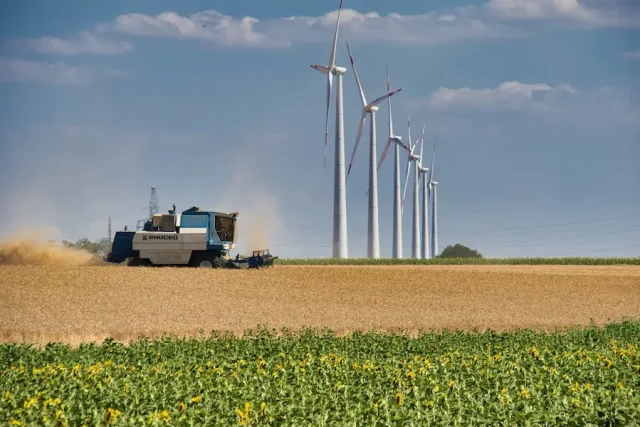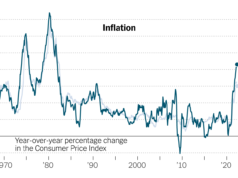Today, agriculture is facing numerous challenges that climate change poses to it. Adaptation requires farmers to be more informed and make more reliable and efficient decisions. In addition, farmers need to increase farm productivity to meet the rapidly growing demand for agricultural commodities. Automation, sustainable farming practices, and digital solutions enable growers to allocate resources efficiently and increase productivity while saving money and time.
The development of agriculture technology gives rise to new agricultural trends that lead to the transition to “smart” agriculture. The technologies applied in this promising direction include the Internet of things, artificial intelligence, and computer vision. IoT devices provide field data, collecting it in real-time and allowing farmers to respond to changes on time. Farmers also use drones and robots for harvesting, irrigation, and weed control. Satellite images from various UAVs and their use in combination with GPS provide valuable, accurate, geo-referenced information about fields. Thanks to newest technologies in agriculture, the sector is gaining new, more sustainable, efficient methods to increase productivity and resilience.
Agricultural Revolution In The 20th Century
The Food and Agriculture Organization (FAO) report shows that agricultural production has grown by 50% in a decade. However, the population continues to grow, and in the coming decades, it will be necessary to increase production to feed 9.3 billion people significantly. In addition, today, about 60 million undernourished people worldwide, the majority in Asia and Africa, and agriculture need to cope with this challenge.
Farmers are finding more and more effective means to adapt and increase agricultural land productivity. The use of precision agriculture technology makes it possible to increase productivity through the efficient use of available resources. Modern tools that significantly improve agriculture include remote sensing, agricultural land management software, and automated equipment. The essence of the agricultural revolution of our day is to transform traditional labor-intensive agriculture into a sustainable and technological industry.
The Food and Agriculture Organization (FAO) report shows that agricultural production has grown by 50% in a decade. However, the population continues to grow, and in the coming decades, it will be necessary to increase production to feed 9.3 billion people significantly. In addition, today, about 60 million undernourished people worldwide, the majority in Asia and Africa, and agriculture has to cope with this challenge.
The application of advanced technology in agriculture helps to reduce crop losses, as farmers are informed about problem areas and can make effective decisions to address problems on time. In a changing climate, it is essential to be aware of potential threats early to protect plants. Moreover, technology has the potential to make supply chains more transparent, which also contributes to meeting the demand for food.
Why Use New Technology In Agriculture?
The term AgTech refers to modern agriculture technology, which is applied in the industry to improve management, facilitate the work of farmers, reduce the negative impact on the environment and reduce costs. Smart farming technologies enable farmers to monitor crop needs more closely and focus on those areas that need special attention.
The application of technological advances in agriculture offers many benefits, not only when it comes to increasing yields but also in protecting the environment and conserving resources, especially exhaustible ones. Technologies can significantly reduce the consumption of pesticides and fertilizers and the amount of water used for irrigation. In addition, innovation implementation contributes to improving the safety of workers.
New And Promising Agricultural Technologies
Technologies used in agriculture were not necessarily created for this purpose. However, thanks to new approaches, their application in the industry has become possible and brought many benefits.
Satellite Imaging
Satellite imagery has long been used in various fields as it has become more widely available. Of course, it has also found applications in agriculture. Farmers get volumes of helpful information from satellite imagery, including spectral indices data.
Satellite imagery analytics companies offer farmers and other agribusiness participants practical solutions for efficient crop monitoring. EOS Data Analytics, which provides artificial intelligence-enabled satellite imagery analytics, has developed EOS Crop Monitoring, a precision farming platform that allows farmers to monitor crop status remotely. This all-in-one solution gives growers access to valuable information, including plant health, soil moisture, weather data, and more.
EOS Crop Monitoring helps farmers to detect threats on time and take action to protect crops against weather-related stress, disease, and pests. This tool provides accurate detection of problem areas, which helps to make effective decisions about field activities and resources allocation.
Field Zoning
Zoning allows you to increase the efficiency of the resources used. For example, with its help, farmers will find out which area requires fertilizer and not distribute them evenly over the entire area. It is an opportunity to automate the application of fertilizers and seeds. Also, this technology allows you to detect the rise and fall of the level of productivity within the field. In this way, farmers save money since it is not necessary to collect soil samples from different areas for analysis.
Connectivity Technologies
Successful adoption of smart farming technologies requires 5g and LPWAN, as well as satellite and broadband connectivity. 5G technology allows the introduction of many devices in agriculture, including IoT sensors and robots, and makes it possible to exchange data quickly. In this way, farmers can track events in the fields in real time and respond to changes on time. High-speed Internet access is also critical to improving the accuracy of operations.
RFID Technology
RFID technology can improve farming product tracking. It works like a barcode that can be data programmed and scanned. The label contains up to 2 KB, which is quite enough, for example, for marking the names of plants, dates, and places of planting. As the shipment progresses, this technology also allows tracking of agricultural products. Thus, to find out the product’s origin and, for example, its expiration date, it is enough to scan the RFID. This technology ensures the reliability of information storage and minimizes human errors. This technology enables consumers to get more accurate information about food products.
Soil and Water Sensors
Problems with crops are not always accessible to human vision, and sensors make it possible to make up for this shortcoming. The sensors relay key information about the condition of the soil, including moisture levels, pH, temperature, and disease or pest stress. This technology allows you to effectively manage working time and reduce the incidence of human errors.
Based on the collected data, the sensors create algorithms, the accuracy of which increases as the number of data increases. As a result, the developed algorithm will help to obtain accurate forecasts for the crop based on the state of the fields in real-time. This information enables farmers to minimize crop losses.
Robotic Technologies
Technological advances in recent years have made it possible to develop robots that can effectively cope with various agricultural tasks. Modern robots use machine vision to determine crop maturity and avoid hazards. Cameras provide a vision for the robots, allowing them to monitor growth, identify weeds, and perform sorting and packing tasks.
GPS technology has also significantly contributed to the development of robotics, as robots can determine their position thanks to it. In addition, tractors and other equipment could not work autonomously without navigation systems. Robots also use machine learning to help them adapt, learn to avoid obstacles in their path, and find better methods for completing tasks.
The main tasks that robots perform on the farm are:
- Sowing seeds
- Weed control
- Spraying with herbicides
- Harvesting
Advantages Of Technology In Agriculture
Agricultural technologies provide farmers with many new opportunities to increase yields in less time and money by allocating resources based on plant needs. In addition, automated machinery and robots make it possible to do labor-intensive work like harvesting or tilling the soil faster and without the participation of many people. An area that used to take a whole week to process can now be processed in one day.
Transporting crops and tracking supply chains is also becoming easier with technology. In terms of customers and market, through various applications and platforms for farmers, one can find information about the demand for different agricultural products and prices. Customers also benefit from using agrotechnologies, as they provide more data on the origin of products. Automated irrigation systems, drones, and soil moisture detection ensure efficient watering, reducing the time required to complete the operation.
Technology also makes it possible to reduce the impact of agriculture on the environment. For example, the total amount of these substances is reduced by applying herbicides, pesticides, and chemical fertilizers more precisely. Farmers do not need to distribute them evenly throughout the field but only in the place where weeds or pests have been found. It helps to reduce or entirely prevent the entry of hazardous substances into groundwater or water bodies.
Agriculture consumes most of the world’s freshwater, but technology can also solve this problem, as farmers are more aware of weather, plant, and soil conditions. Furthermore, technologies provide improved communication between farmers and customers so that the producers can find out about the demanded items. It can help to reduce the waste of food.














